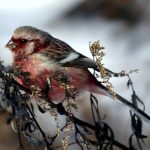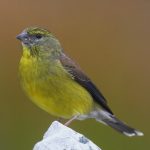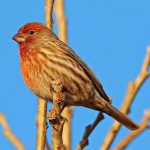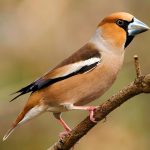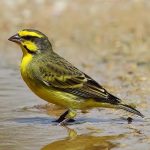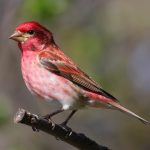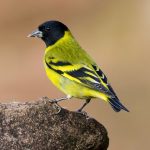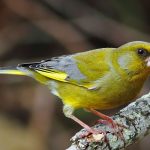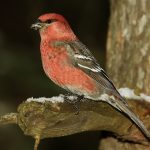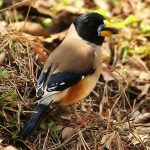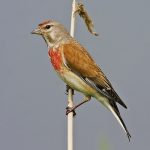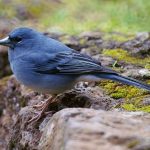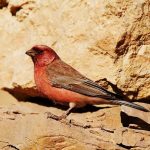Black rosy finch

 |
| (Photo from Planet of Birds) |
Common name:
black rosy finch (en); tentelhão-rosado negro (pt); roselin noir (fr); pinzón rosado negro (es); rosenbauch-schneegimpel (de)
Taxonomy:
Order Passeriformes
Family Fringillidae
Range:
This species is endemic to the western United States, breeding in Montana, Idaho, Utah, Wyoming and marginally in Oregon and Nevada. Outside the breeding season they wander a bit further into Colorado, northern New Mexico and north-eastern California.
Size:
These birds are 14-16 cm long and have a wingspan of 33 cm. They weigh 22-32 g.
Habitat:
The black rosy finch is found in high-altitude grasslands and alpine rocks, also using desert areas during the winter. They are found at altitudes of 3.000-4.500 m.
Diet:
The feed on the seeds of grasses and weeds, which are supplemented with insects during the summer.
Breeding:
Black rosy finches breed in June-August. The nest is a bulky cup made of grasses, moss, and sometimes feathers mixed with grass and animal hair. It is placed in a crevice or hole in a cliff, usually in an inaccessible place, or sometimes in a niche among boulders of a rock slide. There the female lays 3-6 white eggs, which she incubates alone for 12-14 days. The chicks are fed by both parents and fledge about 20 days after hatching, only becoming fully independent 2 weeks later. Each pair raises a single brood per year.
Conservation:
IUCN status – LC (Least Concern)
This species has a large breeding range and a global population estimated at 20.000 individuals. The population is suspected to be stable in the absence of evidence for any declines or substantial threats.
